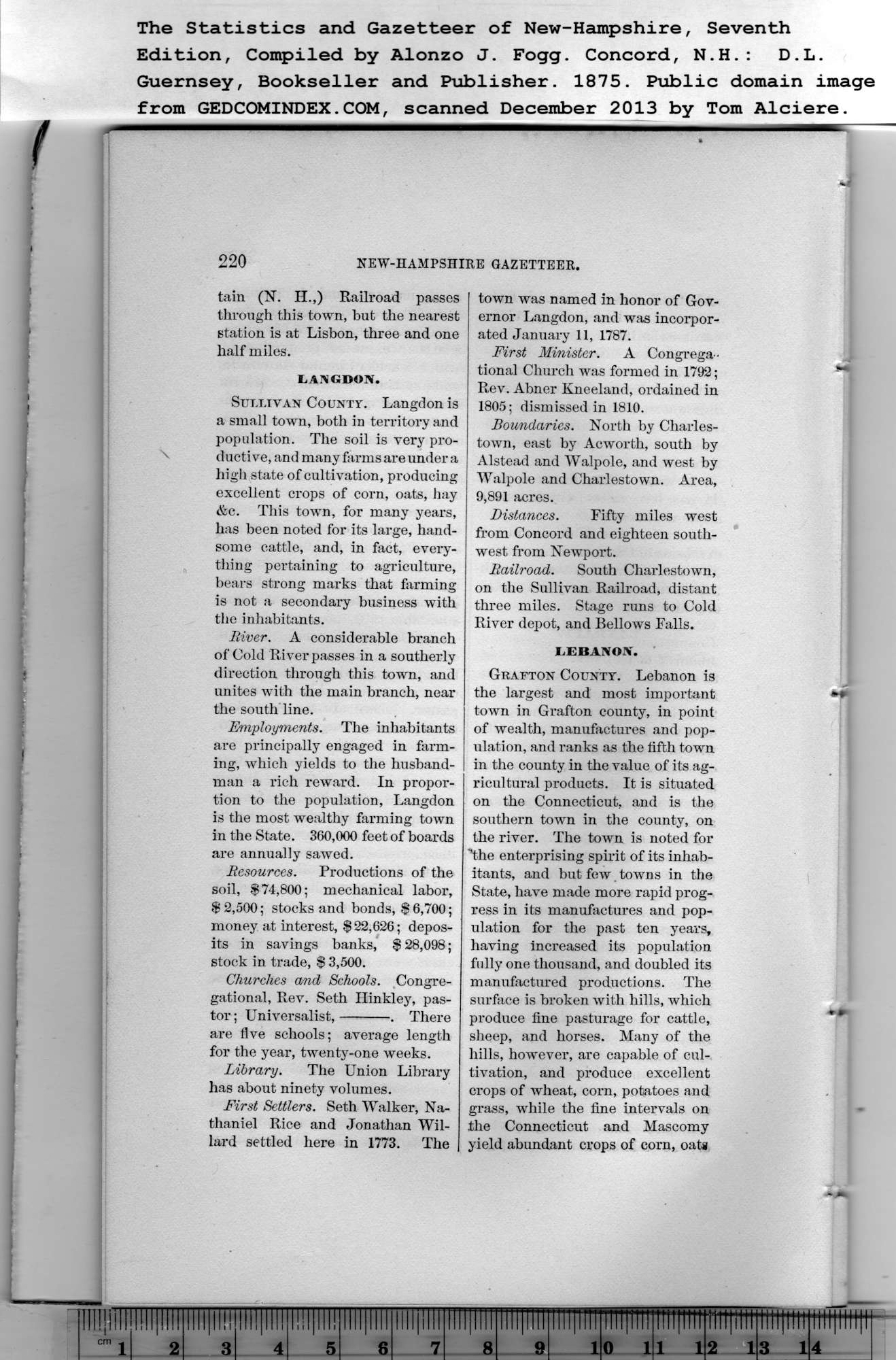|
220
The Statistics and Gazetteer of New-Hampshire, Seventh
Edition, Compiled by Alonzo J. Fogg. Concord, N.H.: D.L.
tain (N. H.,) Railroad passes
through this town, but the nearest
station is at Lisbon, three and one
half miles.
LAIHGDON.
Sullivan County. Langdon is
a small town, both in territory and
population. The soil is very pro-
ductive, and many farms are under a
high state of cultivation, producing
excellent crops of corn, oats, hay
&c. This town, for many years,
has been noted for its large, hand-
some cattle, and, in fact, every-
thing pertaining to agriculture,
bears strong marks that farming
is not a secondary business with
the inhabitants.
River. A considerable branch
of Cold River passes in a southerly
direction through this town, and
unites with the main branch, near
the south line.
Employments. The inhabitants
are principally engaged in farm-
ing, which yields to the husband-
man a rich reward. In propor-
tion to the population, Langdon
is the most wealthy farming town
in the State. 360,000 feet of boards
are annually sawed.
Resources. Productions of the
soil, $74,800; mechanical labor,
$ 2,500; stocks and bonds, $ 6,700;
money at interest, $22,626; depos-
its in savings banks, $ 28,098;
stock in trade, $ 3,500.
Churches and Schools. Congre-
gational, Rev. Seth Hinkley, pas-
tor; Universalist,-. There
are five schools; average length
for the year, twenty-one weeks.
Library. The Union Library
has about ninety volumes.
First Settlers. Seth Walker, Na-
thaniel Rice and Jonathan Wil-
lard settled here in 1773. The
town was named in honor of Gov-
ernor Langdon, and was incorpor-
ated January 11, 1787. |
First Minister. A Congrega-
tional Church was formed in 1792;
Rev. Abner Kneeland, ordained in
1805; dismissed in 1810.
Boundaries. North by Charles-
town, east by Acworth, south by
Alstead and Walpole, and west by
Walpole and Charlestown. Area,
9,891 acres.
Distances. Fifty miles west
from Concord and eighteen south-
west from Newport.
Railroad. South Charlestown,
on the Sullivan Railroad, distant
three miles. Stage runs to Cold
River depot, and Bellows Falls.
LEBANON.
Grafton County. Lebanon is
the largest and most important
town in Grafton county, in point
of wealth, manufactures and pop-
ulation, and ranks as the fifth town
in the county in the value of its ag-
ricultural products. It is situated
on the Connecticut, and is the
southern town in the county, on
the river. The town is noted for
hhe enterprising spirit of its inhab-
itants, and but few towns in the
State, have made more rapid prog-
ress in its manufactures and pop-
ulation for the past ten years,
having increased its population
fully one thousand, and doubled its
manufactured productions. The
surface is broken with hills, which
produce fine pasturage for cattle,
sheep, and horses. Many of the
hills, however, are capable of cul-
tivation, and produce excellent
crops of wheat, corn, potatoes and
grass, while the fine intervals on
the Connecticut and Mascomy
yield abundant crops of corn, oats |
